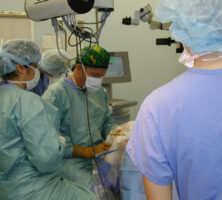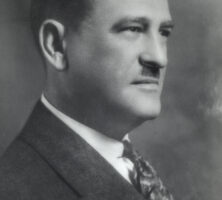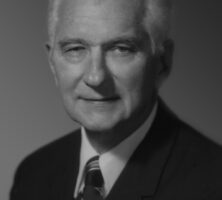The Emory University School of Medicine Eye Center has a long tradition of teaching, research, and patient care in ophthalmology that began in the late nineteenth century. The Emory Eye Center is currently in the top ten eye-research institutions in the country in the amount of funds granted by the National Institutes of Health. As of December 2001, grant funds totaled almost $5 million, which included grants to Emory University’s Departments of Ophthalmology, Pharmacology, and Anatomy Cell Biology; the School of Public Health; and Yerkes National Primate Research Center, all of which participate in Emory’s core grant for vision research.
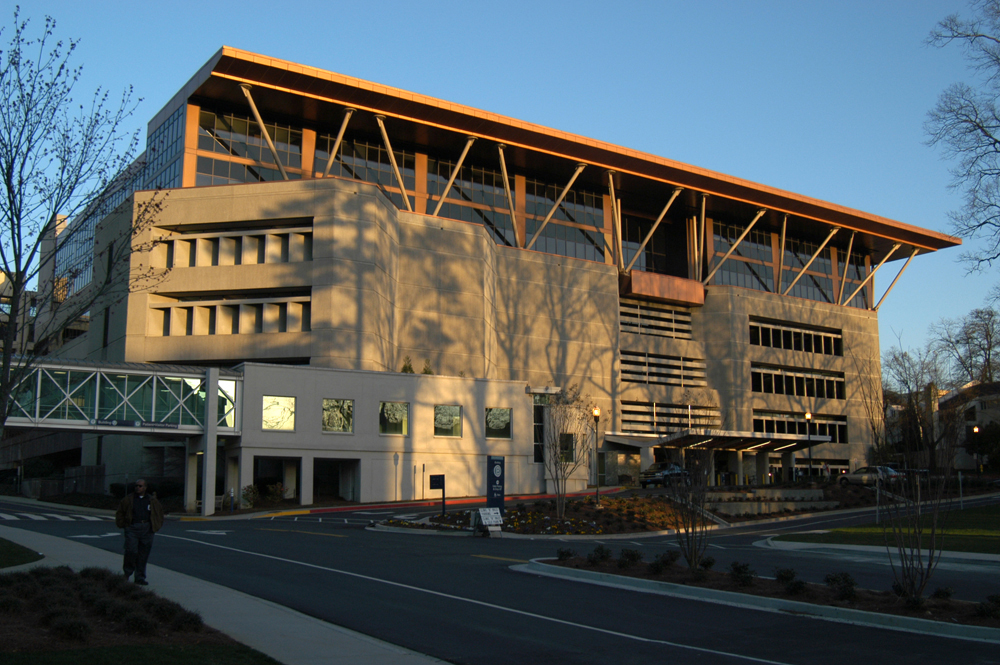
Courtesy of Emory Eye Center
The importance of research has grown along with the burgeoning clinic at the Emory Eye Center. In 2003 the forty-one members of the research staff, including twelve who held the Ph.D., contributed their combined efforts toward crucial eye research that may one day prevent eye diseases as we know them. Some twenty-five physicians are principal investigators conducting more than fifty research projects that involve patients.
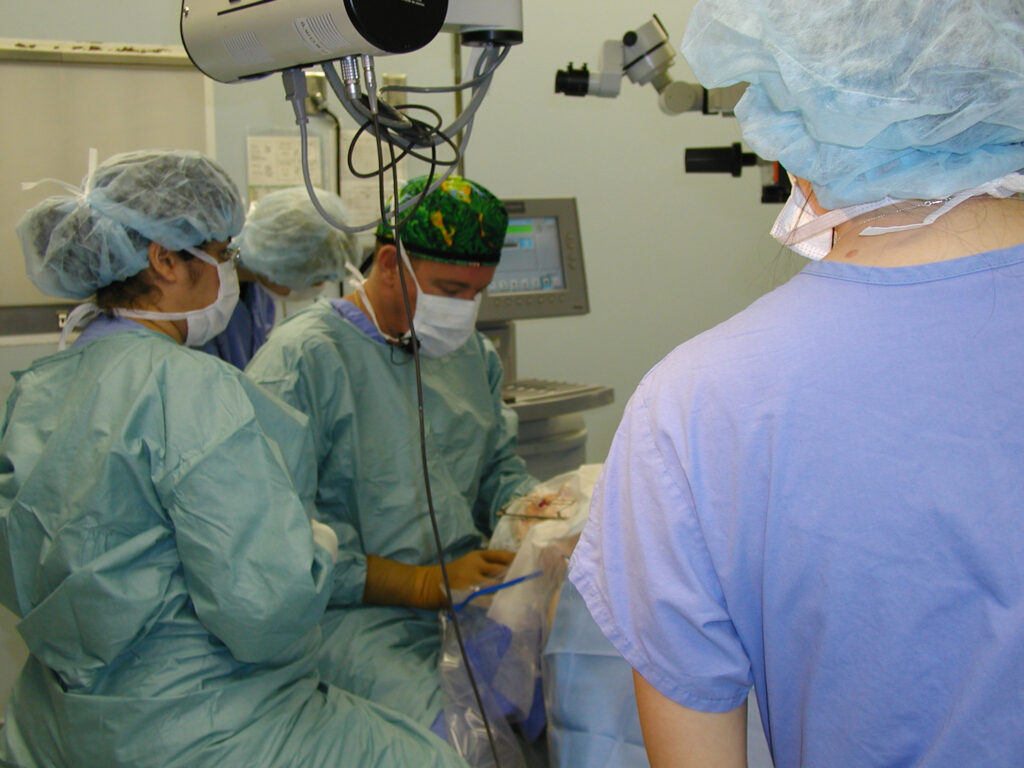
Courtesy of Emory Eye Center
Research projects at Emory include studies of melanoma of the eye, retinal pigment transplantation and immunology, drug delivery to the posterior eye, corneal retinal cell evaluation, hereditary cataract, age-related macular degeneration, and gene therapy. Clinical trials are conducted in melanoma, diabetes, glaucoma, and macular degeneration.
Research projects are conducted in collaboration with the Georgia Institute of Technology, Georgia State University, and Morehouse College School of Medicine. Emory Eye Center also collaborates with Yerkes National Primate Research Center, the Centers for Disease Control and Prevention, and the Veterans Administration Medical Center.
The many strides that have been made in eye research and clinical eye care in Georgia can be traced back to a time when the practice of ophthalmology was just beginning in the United States. In 1872 Abner W. Calhoun, the southeast’s first specialist in the eye and ear, came fresh from training in Vienna, Austria, and Berlin, Germany, to Atlanta Medical College, which was established by his father, Andrew B. Calhoun, in 1854. (Atlanta Medical College became Emory University School of Medicine in 1915.)
Abner Calhoun served as faculty president from 1900 until 1910. He and industrialist Andrew Carnegie provided funds to construct a medical college building that later became part of Grady Memorial Hospital, still a training ground for Emory residents. As the only scientifically trained ophthalmologist south of Maryland, Calhoun was the specialist of choice for many southerners with serious eye problems before the turn of the century.
From 1910 until 1940, Calhoun’s son, F. Phinizy Calhoun Sr., was department chair at Emory, earning a reputation as one of the region’s leading ophthalmologists. His successor, Grady Clay, developed an academic program for ophthalmology students and for eye, ear, nose, and throat resident physicians. Clay served as department chair from 1940 until 1946.
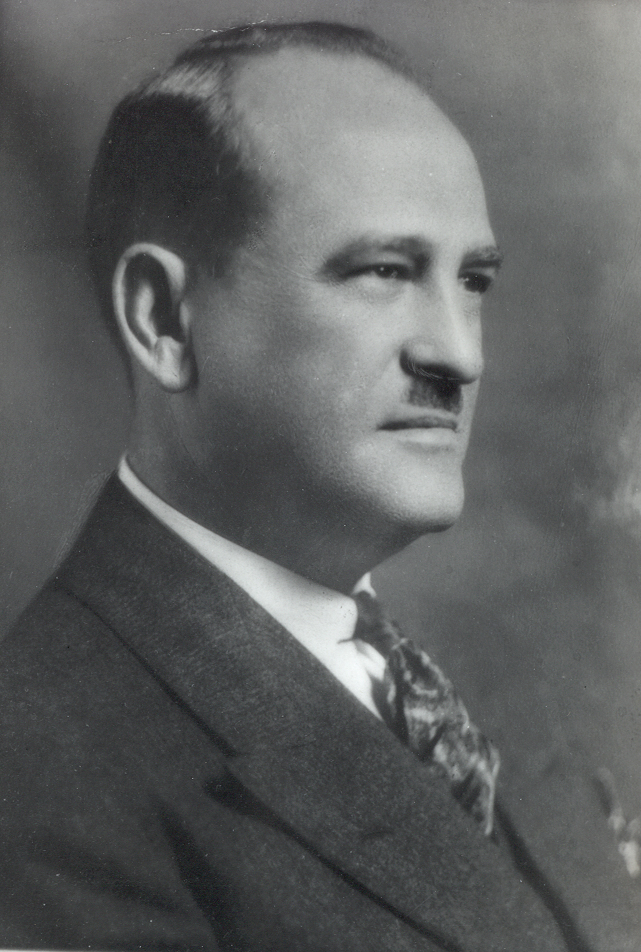
Courtesy of Emory Eye Center
In 1940 Clay and Phinizy Jr. (F. Phinizy Calhoun’s son) organized an ophthalmic pathology laboratory, one of only a handful of laboratories of its kind in the country. The junior Calhoun went on to serve as department chair from 1946 until 1978. During his tenure he helped open an eye bank, the fifth in the United States, to serve patients in the Southeast who needed cornea transplants. He is credited with bringing modern ophthalmology to Georgia. In 1947 Phinizy Calhoun Jr. became the first eye doctor in the state to perform surgery under a microscope and the first in the Southeast to perform a corneal transplant. Colleagues regarded him as one of the best-trained ophthalmic pathologists in the country during the 1950s and 1960s, when the subspecialty was beginning to develop. During his many years at Emory, he helped train more than 100 ophthalmologists, who practice across the country.
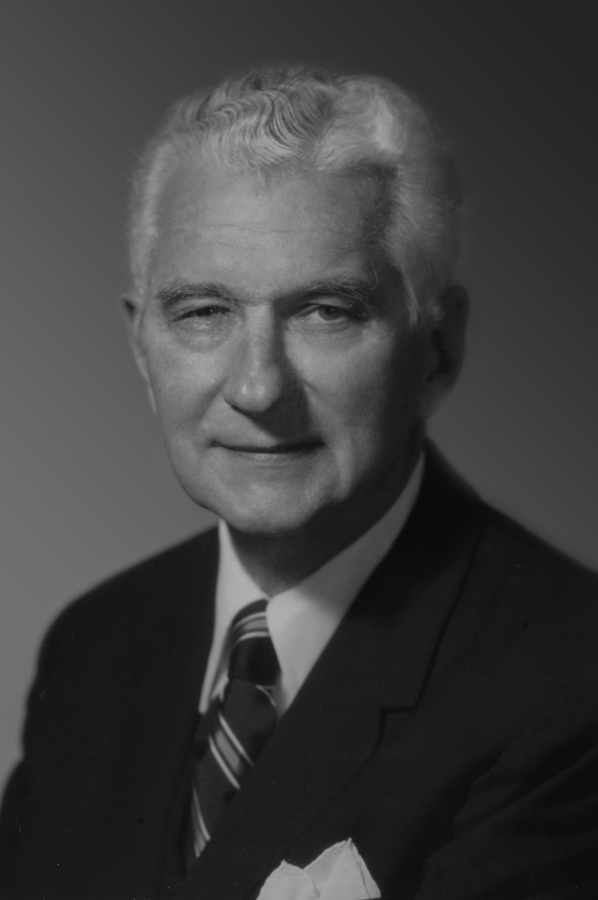
Courtesy of Emory Eye Center
Emory remains a top eye center in the country, according to Ophthalmology Times, a leading professional journal, and in the annual rankings of U.S. News and World Report magazine.







